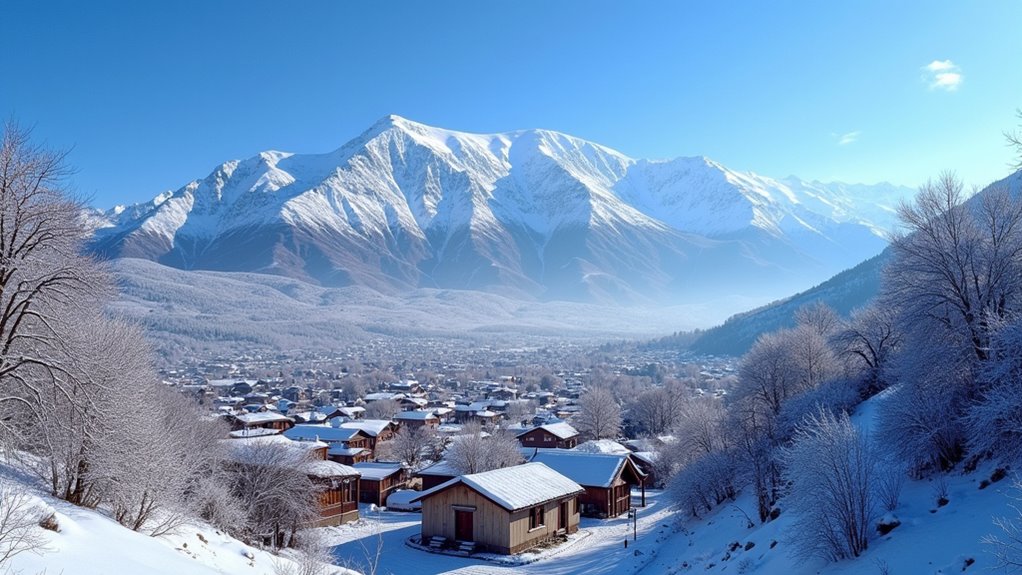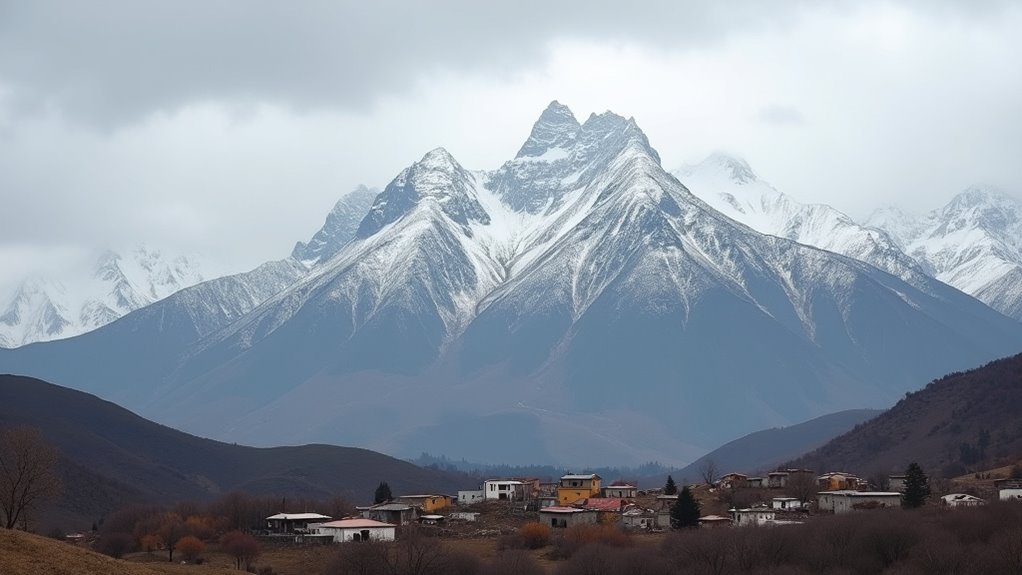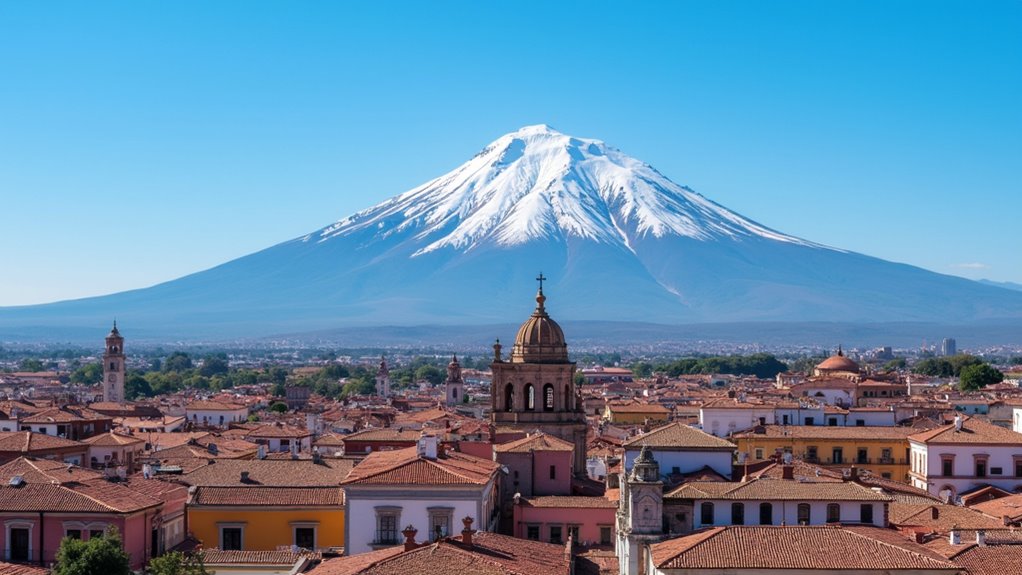Physical Address
304 North Cardinal St.
Dorchester Center, MA 02124
Physical Address
304 North Cardinal St.
Dorchester Center, MA 02124

Tucked away in Mexico's diverse landscapes, these 7 cities defy the country's warm reputation, offering visitors a surprising glimpse into its chilly winter wonderlands.
When you think of Mexico, the first thing that comes to mind is likely its warm, sunny climate. But did you know there are several cities across the country that experience chilly temperatures, even freezing conditions, during the winter months? From the arid north to the mountainous south, let’s explore 7 of the coldest places in Mexico and uncover the surprising diversity of its weather patterns.

Although located in the northern Chihuahuan Desert, Ciudad Juárez experiences a cold desert climate (BWk). Temperatures typically range from 34°F to 97°F throughout the year, with an average mean of 64.9°F. January is the coldest month, averaging 8.8°C, while July is the warmest at 29°C. The rainy season spans 4.4 months from June 13 to October 26, with August seeing the highest average rainfall at 1.5 inches and the most rainy days (7.8 days). Extremes are rare, with lows below -4°C and highs above 40°C. The city receives significant sunshine but limited rainfall due to its desert climate. Ciudad Juárez sees about 24 days below 0°C annually and around 180 days above 25°C, with monthly temperatures varying greatly between winter and summer.
Situated in northern Mexico, Chihuahua experiences a semi-arid climate with warm temperate thorn steppe characteristics. Averaging 18.6–18.9°C, Chihuahua sees mean annual temperatures ranging from freezing to nearly 100°F. Humidity levels vary seasonally, impacting overall comfort.
Winters are dry, with January lows rarely dropping below 24°F. Summers are hot, with June peaking near 95°F on average. Rapid temperature shifts between 50-86°F are common during spring and fall.
Though cooler than desert regions, Chihuahua’s distinct seasons are more pronounced than tropical southern Mexico. While not as extreme as high-elevation cities, Chihuahua’s semi-arid conditions set it apart as one of Mexico’s chillier locales.

Durango lies to the south of Chihuahua, sharing a similar semi-arid climate. At an elevation of 6,230 feet, it experiences cool temperatures year-round, with winter lows near freezing. Durango experiences minimal precipitation throughout the year. Summers are sunny and hot, with highs around 92°F. Diurnal temperature swings of 25°F are common. Precipitation is sparse, averaging just 20.6 inches annually, with the driest month being April.
While frost is possible from December to February, record lows rarely dip below 26°F. Packing layers is essential for visiting in winter, while sun protection is a must in summer.
The best time to visit is during the mild spring months of March to May.
Oaxaca enjoys a diverse climate owing to its varied topography, ranging from coastal regions to highland valleys.
Its annual average temperature sits at a comfortable 17.2°C, rarely dipping below 5.5°C or exceeding 33.8°C. The region’s southern latitude shields it from northern cold fronts, contributing to its mild winters.
Winters are mild, with daytime highs around 20°C even on chillier days. Summers are warm but not oppressive, with temperatures peaking in the 30°C range and cooling off at night to the 15°C mark.
Precipitation patterns feature a wet season from June to September, while the rest of the year remains relatively dry.

Although Chiapas enjoys a tropical savanna climate, its diverse topography results in considerable temperature variations across the state. While coastal regions maintain relatively stable temperatures, mountainous areas like San Cristóbal de Las Casas can be much cooler, with January lows dipping to 4.2°C. Chiapas has an elevation of 535.57 meters Daytime highs, however, typically exceed 20°C even during the coldest months. Travelers should pack accordingly, as the weather can fluctuate greatly:
Chiapas’ diverse topography results in significant temperature variations, with mountainous areas like San Cristóbal de Las Casas experiencing cooler January lows of 4.2°C.
Chiapa de Corzo sees temperatures ranging from 18°C to 32°C, reflecting a warmer climate compared to high-altitude regions. Rainfall patterns vary considerably, with coastal areas receiving more precipitation than inland areas. The dry season from November to April is often the best time to visit Chiapas. Extreme temperatures below 9°C or above 38°C can occasionally occur in certain parts of the state.
Located at an impressive elevation of over 2,200 meters, Mexico City enjoys a subtropical highland climate that’s surprisingly cool and pleasant throughout the year. The city experiences a significant temperature variation, with maximums reaching up to 25°C during the warmer months and minimums dropping to around 7°C in winter. The rainy season runs from June to September, with July being the wettest month. Despite the rainfall, the city still experiences ample sunshine. For travelers seeking ideal conditions, spring months offer the most balanced weather experience before the heavy rains begin. However, Mexico City’s urban environment and pollution can impact local weather conditions, sometimes leading to poor air quality and visibility. [The rainy season lasts 7.0 months (April 13 – November 12), with July being the month with the most rain at an average of 4.9 inches.

With an average temperature range of 43°F to 79°F, Puebla’s humid subtropical climate offers a pleasant year-round experience. Nighttime temperatures can drop to freezing from mid-November to early March, but the warmest months are April, May, and June.
Puebla’s humid subtropical climate offers a pleasant year-round experience, with nighttime temperatures dropping to freezing in winter.
Expect an average of 139 rainy days per year, with heavier rainfall during the summer. Surrounded by stunning mountains, Puebla enjoys ample sunshine, averaging 3,562 hours annually. The growing season in Puebla lasts from early January to late December.
To make the most of your visit, pack layers for the cool nights and warm days. Explore the city’s abundant history, vibrant culture, and delectable cuisine – all while relishing Puebla’s mild, comfortable climate. Many travelers consider this historical destination worth visiting for its unique blend of cultural attractions and comfortable weather.
Mexico’s diverse landscapes reveal surprising cold spots. For instance, the mountainous city of Durango can experience chilly year-round temperatures, dropping below freezing in winter. This statistic may surprise readers, as Mexico is often associated with sunny beaches and warm weather. Yet, the country’s varied geography produces a range of climates, showcasing the nuanced nature of weather patterns within its borders.